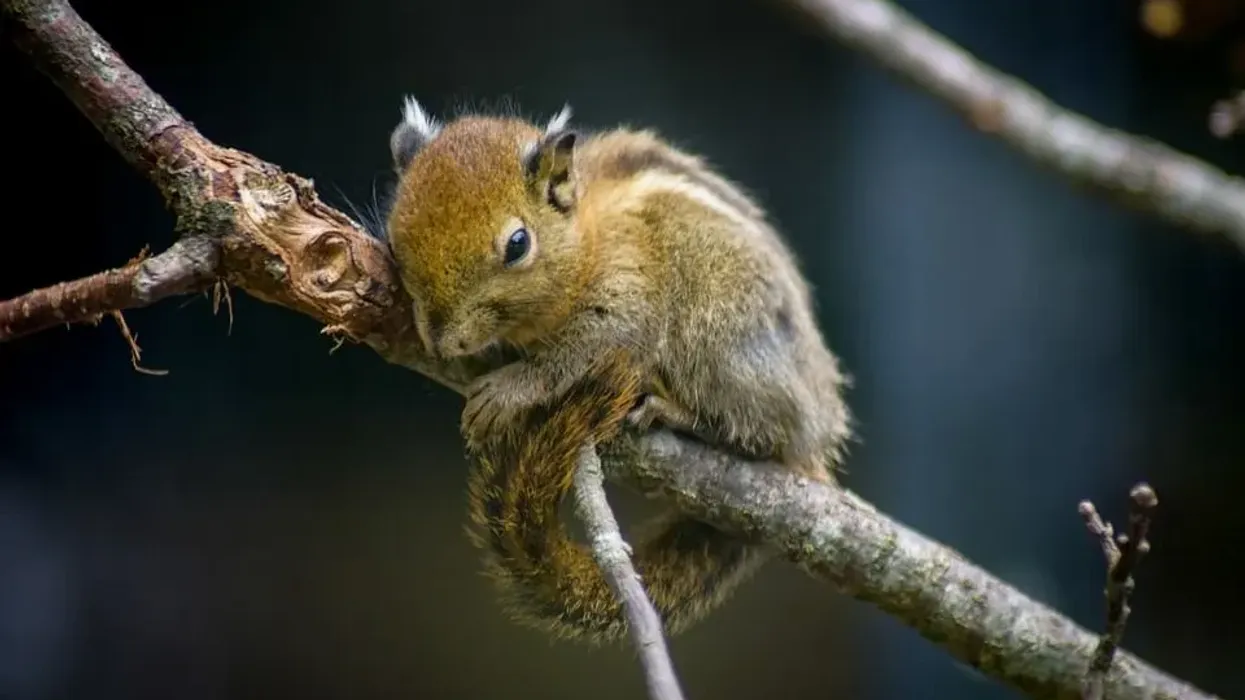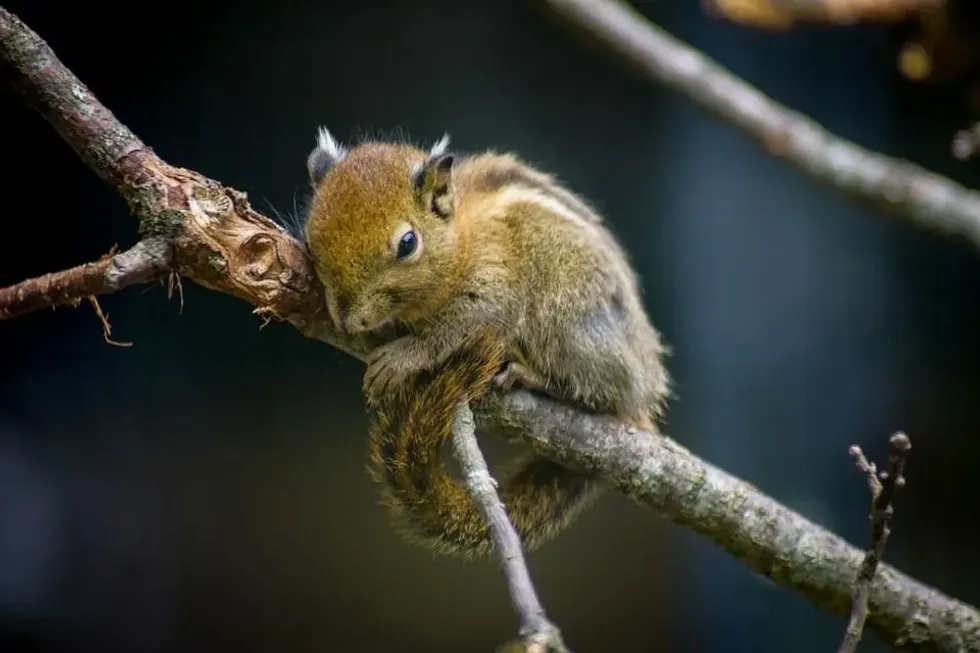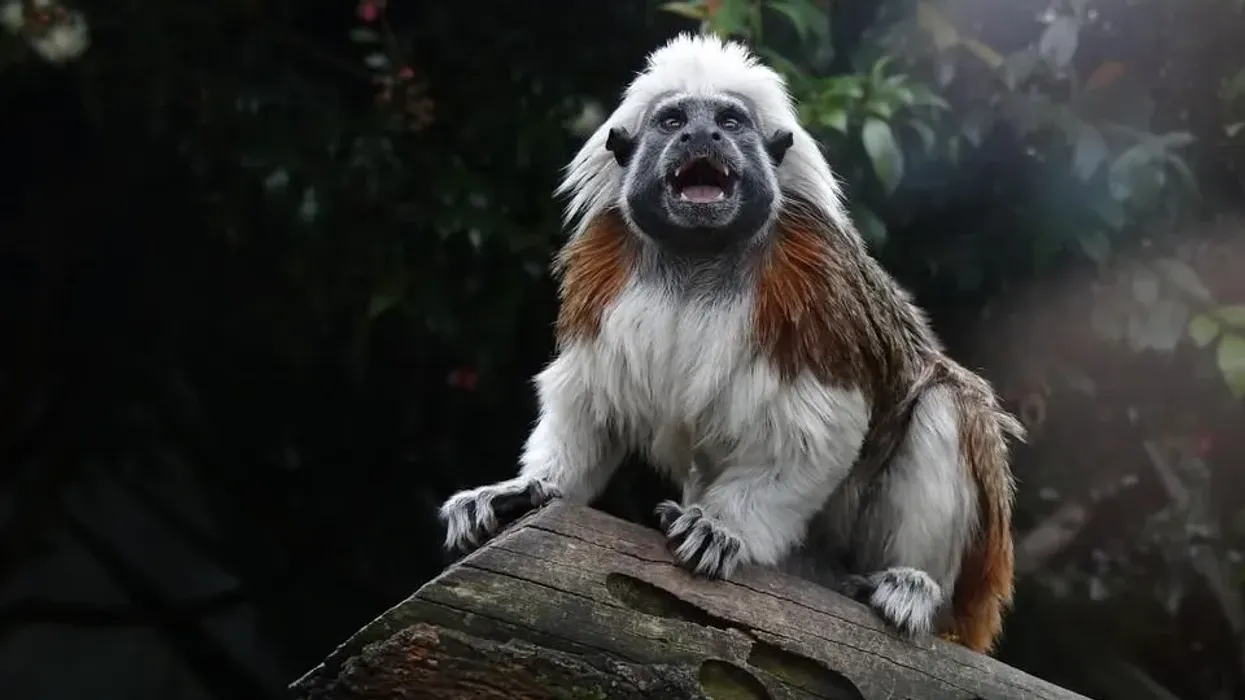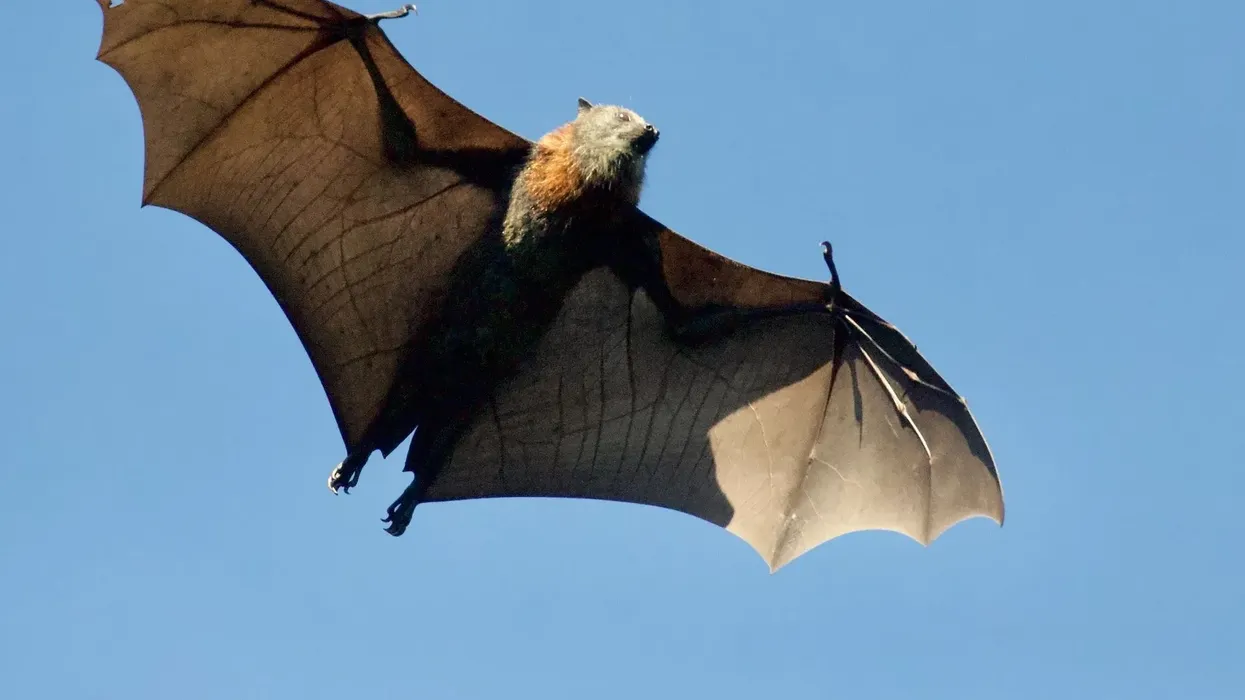The chipmunk (Tamias striatus) is a rodent member of the squirrel family. They are small furry animals with black, white, and red-brown stripes extending from their head to their tail and are mostly found in North American woods. Their diet includes berries, nuts, and seeds, but they also eat insects and bird eggs.
They like to live hidden in chipmunk holes called their 'den', where they store their food for the winter and some chipmunks hibernate here throughout the winter.
A chipmunk's ecology and life history are very simple as they live alone throughout their life and only come together once a year in the spring season when they want to mate. They can have different mating partners, and their litter size is normally between two and eight pups in a span of 30 days.
The baby chipmunk comes out of the chipmunk burrow six weeks after its birth and strikes out on its own within the next two weeks, separating from its mother.
Here are some amazing facts on chipmunks that you will enjoy. If you like these facts about the history and ecology of the chipmunk, then do read our guides to the shrew and the great crested flycatcher too!
Chipmunk Interesting Facts
What type of animal is a chipmunk?
Chipmunks are small members of the squirrel family. Chipmunks are not squirrels as squirrels do not have stripes in the middle of the back, and squirrels are larger than chipmunks. Some species of squirrels have stripes on their back, but they don't have stripes on their head like chipmunks.
What class of animal does a chipmunk belong to?
Chipmunks are small mammals belonging to the genus Tamias. The chipmunk (Tamias striatus) has black and brown stripes on the middle of the back and head and they have long bushy tails.
How many chipmunks are there in the world?
There are 25 species of chipmunk in this world, but the most common species of chipmunk is the red-colored chipmunks with brown and black stripes on the back and head. Chipmunks are mainly found in North America, except for the Siberian chipmunk, which is found outside North America in Asia and parts of Europe.
Where does a chipmunk live?
Chipmunks are mostly found in dens underground, but they can also be found sometimes in woods on trees or bushes.
Most chipmunks dig burrows to live in, where they make tunnels and chambers. Chipmunks largely stay hidden inside their nests or burrows, and when they go out for food, they gather food in areas with underbrushes or behind rocks and logs so that they can stay away from their predators.
They like to stuff food in their cheek pouches to carry it back to their nest or burrow to store.
What is a chipmunk's habitat?
Chipmunks are excellent swimmers and tree climbers. Whenever they feel any kind of danger, they will run and hide in the trees or in their burrows.
They like to live in a variety of habitats like mountains and forests but prefer wooded areas and are most often found in dens or burrows. They also tend to change their home every season to stay hidden from predators.
Some chipmunks collect food from their habitat so that they can hibernate throughout the winter, sleeping inside their dens and waking to eat food from their store. Others will sleep for long periods and then venture out of their dens to find more food to eat.
Who do chipmunks live with?
Although chipmunks are often seen around each other, they are not social animals. They like to live alone inside their own chipmunk burrow and they only come together in the spring season, which is their mating season. As we know, some chipmunks hibernate alone throughout the winter inside their dens.
How long does a chipmunk live?
The chipmunk lifespan is not very long as they only live for two to four years. However, a Siberian chipmunk can live for six to 10 years.
How do they reproduce?
Chipmunks mate once a year in the spring season, except for the Siberian Chipmunk who has two different breeding periods in early spring and in late summer. Throughout the year, chipmunks live alone but in the spring season, they come together for mating.
The gestation period of a chipmunk is 30 days and usually, they give birth to between two and eight young at a time.
What is their conservation status?
Most chipmunks have the status of Least Concern. However, the Palmer's chipmunk is classified as Endangered as they are only found in one small mountain range in southwestern Nevada. Due to human activities, they have become an endangered species.
Chipmunk Fun Facts
What do chipmunks look like?
Chipmunks are small furry animals that look a lot like a squirrel but have brown, black and white stripes on their back and head. They also have bushy and long tails and stubby feet with short pointy heads. They are easy to identify because of their unique markings.
How cute are they?
Chipmunks are cute and absolutely adorable animals. When they squeeze lots of nuts and berries into their chipmunk cheeks, their head looks big and uneven, and they become a really chubby chipmunk which is just so cute!
With their tiny feet, bushy tails, and small bodies, they look like cute and furry soft toys. Kids will love any cute chipmunk character, thanks to the cute squeaky noise they make while eating and how adorable they look when they hold lots of nuts and seeds in their small hands.
How do they communicate?
Chipmunks communicate using loud bird-like chirps and their body language to express their protectiveness, dominance, and their occupied territory or to warn their young of any dangers. Female chipmunks also make mating calls using high-pitched, bird-like vocalizations.
How big is a chipmunk?
The chipmunk is a small mammal, even smaller than a common squirrel, as they weigh 1-5 oz (28-142 g) and are 4-7 in (10-18 cm) long. The chipmunk's biggest species is the eastern chipmunk which grows to 11 in (28 cm) and weighs up to 4.4 oz (125 g).
How fast can a chipmunk run?
A chipmunk can run up to 21 mph (33.8 kph). They can also jump up to 3 ft (0.9 m) high!
How much does a chipmunk weigh?
A chipmunk is a small creature that weighs between 1-5 oz (28-142 g). The weight of a chipmunk depends on its species, as the eastern chipmunk can weigh up to 4.4 oz (125 grams).
What are their male and female names of the species?
A male chipmunk is called a buck and a female chipmunk is called a doe.
What would you call a baby chipmunk?
Baby chipmunks are often called kittens or pups. They are tiny in size and are born hairless and blind. A group that is born together at the same time is called a litter.
What do they eat?
The typical chipmunk diet includes chipmunk food like berries, nuts, seeds, fresh plants, and grains. They are omnivores as they also eat insects, bird eggs, and arthropods such as millipedes and centipedes as part of their diet.
Are chipmunks dangerous?
Chipmunks may look cute and adorable but are not friendly and social in nature. They can be dangerous as they can bite if they feel threatened by humans. Usually, they don't come near humans and run away when they feel danger but their painful bite is something to always be aware of.
Would they make a good pet?
A wild and fully-grown chipmunk cannot make a good pet as they are not friendly and social. They cannot stay in one place and often want to be hidden. If kept as a pet from a very young age, only then can a chipmunk respond and become accustomed to living near humans.
Did you know...
A chipmunk can gather up to 165 acorns in a day and can carry 10 almonds in its cheek pouches at once! One of the best chipmunk facts for kids is that if there is a chipmunk vs. squirrel fight, the squirrel is most likely to win.
Can you have a pet chipmunk?
Pet chipmunks are rare but it is possible to keep a chipmunk as a pet. A pet chipmunk will be relatively easy to handle if it becomes accustomed to human contact at a young age and does not grow up in a wild chipmunk's habitat. A pet chipmunk can learn to play and handle gentle petting.
How to get a chipmunk out of your house?
If a chipmunk is in your house, leave it alone and close all the interior doors of your house, opening the windows and exterior doors so that the chipmunk can find her way out of your house.
If she cannot find her own way out of the house, then you can set a bait for her by putting peanut butter near the door and leaving her alone to discover it.
Chipmunk repellent and chipmunk deterrent ideas that can be used to prevent these animals from coming too close to your home includes a mixture of hot pepper and garlic.
To fill chipmunk holes, homeowners can put mothballs (take care using these in family homes or homes with pets as they are toxic) into chipmunk holes before covering them with mud and dirt.
Here at Kidadl, we have carefully created lots of interesting family-friendly animal facts for everyone to discover! Learn more about some other mammals including Chinese hamsters, or the northern short-tailed shrew.
You can even occupy yourself at home by drawing one on our chipmunk coloring pages.







